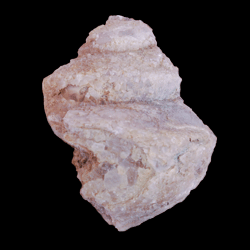Gastropoda
Classification
Phylum: Mollusca
Class: Gastropoda
Cincinnatian Orders: Bellerophontida, Euomphalina, Murchisoniina
Geologic Range
Lower Cambrian – Recent
Common Paleoecology
Gastropods are an extant class of epifaunal mollusks
Characteristics of the Class
- Gastropods are snails
- Conical or planar spiraling growth pattern (conispiral or planospiral)
- Growth by addition of new shell material on the open end of the spiral shell
- Terrestrial or aquatic
- Generally preserved as molds
[accordions title=”” disabled=”false” active=”1″ autoheight=”false” collapsible=”true”] [accordion title=”Published Descriptions”]
Treatise on Invertebrate Paleontology, Part I, Vol. 1 (1960):
- The class Gastropoda includes Mollusca with a distinct head, which in unspecialized forms has eyes and tentacles and is more or less fused with the foot, typically solelike and adapted for creeping, but much modified in pelagic and some other forms. a radula normally is present. Cerebral and pleural nerve ganglia are distinct. Organs of the pallial complex are re-oriented (in relation to their positions in a conjectural primitive mollusk) as the result of “torsion,” which in some forms is a definite episode observable in early ontogeny, and in others is inferred to have taken place in ancestral forms, although omitted in a condensed ontogeny. Bilateral asymmetry is present to a varying degree in all living representatives, although complete symmetry may have existed in the extinct Bellerophontacea. The shell, if present, is single (univalve), calcareous, closed apically, endogastric when spiral, and not divided regularly into chambers.
- The definition just given excludes certain groups which have frequently been included among the gastropods, but in which the orientation of the various organs is (or is inferred to have been) unaffected by “torsion” and in which there is bilateral symmetry. These groups are the polyplacophora, with their 8-valved shells, and the monoplacophora with their cap-shaped shells. Excluded also are the shell-less Solenogastres (or Aplacophora), which Lankester included with the polyplacophora in his Gastropoda Isopleura. The systematic position of the bellerophontids, with their bilaterally symmetrical, coiled shells, has been much discussed. J.B. Knight has reviewed the relevant evidence and concluded that they were forms which were affected by torsion and were true prosobranch gastropods. If they underwent torsion in early ontogeny, an asymmetrical arrangement of their organs must have existed during the course of this episode. Whether perfect symmetry of all soft parts existed on completion of the torsion we have no means of knowing, but the presence of two symmetrically arranged columellar muscle scars can be observed.
- All gastropods, with the possible exception of this group, are more or less asymmetrical. The asymmetry is obvious in most forms in which the shell is coiled. In Patella and similar genera, the simple conical shell is symmetrical, but asymmetry is displayed by the nervous system and the digestive, excretory and reproductive organs. In Fissurella, although the shell is symmetrical when adult, it is coiled and asymmetrical in an early developmental stage. The pteropods, a group of opisthobranchs modified for a pelagic mode of life, include several genera with bilaterally symmetrical shells, but their digestive, circulatory and reproductive organs lack symmetry.
- Descripion of the food as “solelike and adapted for creeping” needs qualification. It is not strictly applicable even to all benthic gastropods. In the swimming pelagic groups (pteropods and heropods), the foot is much modified for purposes of propulsion. In some species of the parasitic genus Stilifer but not all, the foot is much reduced. It has completely atrophied in the endoparasitic family Entoconchidae. A radula is present in the great majority of gastropods but is obsolete in parasitic families, such as the Eulimidae and Pyramidellidae. Families in which tentacles are absent from the head include the Gadiniidae and Siphonariidae, while eyes are absent in most Cocculinacea, a deep-sea group.
- The absence of regular internal septa pierced by a siphuncle distinguishes gastropod shells from those of most Cephalopoda, although irregular septa may sometimes seal off the earliest-formed parts of the shell when the viscera move forward to some extent as it grows.
[/accordion] [/accordions]


